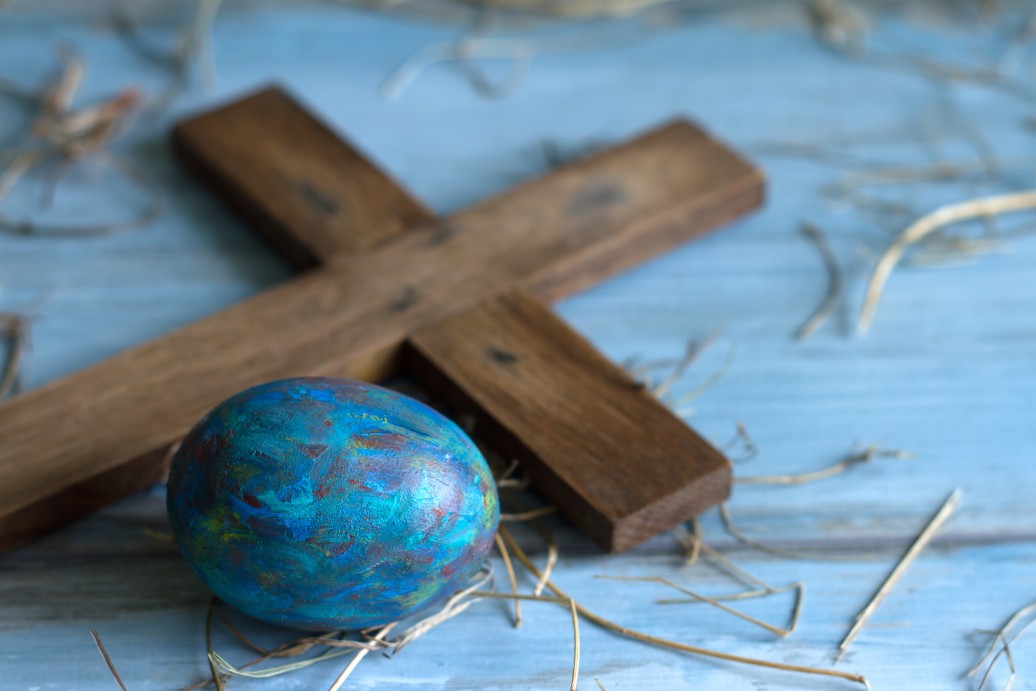Once winter has loosed its icy grip on the world, it’s time to celebrate warmer days with spring. Mother Nature awakens from her long winter nap and radiates new life. No wonder Easter and spring celebrations are in harmony with each other.
Some Easter traditions are so automatic that you may not stop to think about their origins. One tradition is the custom of coloring eggs and hiding them for children to find. Does the Biblical story of Christ’s resurrection mention magical rabbits, frilly clothes, and candy baskets? Of course not, but there’s a reason behind these seasonal celebratory acts.
The Origins of Easter
Like most Christian holidays, Easter was swapped for a pre-Christian spring festival. At the spring equinox, daylight was extended and gave relief from the frozen darkness of winter. It was a time when pre-Christian Europeans celebrated the resurrection of life and Eostre, the goddess of fertility. She corresponds to the Sumerian fertility goddess, Ishtar.
Eostre to Easter
As the nature religions of Europe gave way to Christianity, the powers that be devised a way to “Christianize” pagan deities and festivals. The Mother Earth figure of Eostre was cleverly rebranded as the Virgin Mary. She gave life to the Son of God and therefore became the Queen of Heaven. The spring festival’s traditions were changed to represent Christ’s resurrection, which became today’s Easter.
Here Comes Peter Cottontail
There probably weren’t any Easter rabbits hopping around the trail to Golgotha, the place of Christ’s crucifixion. The cute little bunny has its origins in the pagan myths of Eostre. According to the legend, she turned a bird into a magical rabbit that laid colorful eggs in a nest. Since she was the goddess of spring, she favored pastel hues of pink and green.
Many pre-Christian Europeans celebrated the Eostre Tide by coloring eggs and placing them in straw nests for the children to find. It wasn’t long before they created the myth of the magical bunny that hid its lovely eggs as a springtime treat. Eggs and rabbits are both symbolic of Eostre, fertility, and rebirth.
Of course, it’s difficult for a culture to discard its religious traditions in favor of another. Instead, the new Christian faction changed some names and made everyone happy. The people could celebrate the resurrection of Jesus while still maintaining their Eostre rabbits and attractively dyed eggs.
Those who are real Easter enthusiasts recollect that the Easter bunny’s name is Peter Cottontail. It’s a combination of rabbit characters in early 20th century children’s books by Beatrix Potter and Thornton Burgess. Peter Cottontail has inspired countless Easter-themed art, literature, and music.
Lenten Season and Eggs
During the 40 days before Easter Sunday, many Christians observe a fast for Lent. They abstain from eating meat, dairy products, and eggs to show their submission to God. Although, how would early Christians save the eggs their chickens laid without refrigeration?
They discovered that boiled eggs could be preserved longer, and they could enjoy them after the Lenten fast, so nothing was wasted. Often, families would share these boiled eggs with poor peasants who had no meat for celebrating Easter.
Thus began the tradition of using natural dyes to color the eggs to make them beautiful and quietly represent Eostre. In the 13th century, royal courts started the tradition of painting lavishly styled eggs to give as gifts. These were the predecessors of the stunning jewel-encrusted Faberge egg sculptures of Czarist Russia.
Which Came First, Chicken or the Egg?
There wouldn’t be any Easter eggs without chickens, so they have their part in traditional Easter lore. Baby chicks represented fertility and new life, especially hens. Even today, you see Easter greeting cards and decorations embellished with chicks and eggs.
Roosters, however, don’t enjoy such a venerable reputation. Their crow is often viewed as a bad omen due to Peter’s denial of the Lord in Matthew 26:54-62. Just as Jesus predicted, Peter denied Him three times before the rooster crowed. You’ll see hens and chicks in Easter décor, but not the maligned rooster.
Reinventing Eostre’s Holiday
Early Christians hadn’t forgotten Eostre’s affinity for enchanted rabbits that laid golden eggs. The perennial Easter rabbit probably hopped his way into American Easter tradition in part by German immigrants. They told their children stories of the “Osterhas,” which was a magical hare that laid Easter eggs for children.
Initially, Eostre’s rabbits and the Osterhas laid colored eggs in straw nests, like a hen. It became a Christianized tradition to color eggs and hid them in grassy spots for overjoyed children to find on Easter morning. However, some pre-Christian European lore held that the enchanted bunny left baskets of shiny eggs and other tasty treats.
These pagan and Christianized traditions merged to create what is now modern Easter. Even folks with no particular religious inclination get into the spring custom of the Easter rabbit, jewel-toned eggs, baskets, chocolate, and jelly beans. It bears little to no resemblance to how the Early Church memorialized Jesus’ death and resurrection.
Modern Christians have learned a slant on the earlier customs of Eostre’s spring rituals. You may also equate spring and Easter as new life in the Resurrected Savior. As the fuzzy Easter bunny hides treats for all, you can find glorious nuggets of truth in God’s Word and His many blessings.
Some Christians view the egg as an ideal representation of the Godhead. You have one egg composed of shell, egg white, and yolk. Likewise, you have only one God manifest as Father, Son, and Holy Spirit. Both have three components that represent a whole.
Just as the Easter rabbit hides the eggs, Christ was sealed in a tomb for three days and then arose again. The highlights of His Passion were in the Garden of Gethsemane, and He met Mary Magdalene in a garden on the morning of the resurrection. Each time, He was surrounded by lovely flowers represented by sprays of spring flowers and quintessential Easter lilies.
It’s not a coincidence that everyone dons their finest apparel for Easter Sunday, often in Eostre’s favorite floral pastels. In times past, ladies often wore attractive corsages of orchids, another ancient symbol of strength and fertility. Some ladies still hold on to this tradition for the Easter sunrise service.
The Easter Feast
Many Christians observe Lent, a 40 day fast before Easter. You may abstain from meat, alcohol, and otherworldly pleasures during these days. It all culminates in celebrating Christ’s resurrection on Easter Sunday, marked by breaking the fast.
Now, it’s a tradition even among non-believers to celebrate a bountiful Easter dinner. Many people serve lamb as a main dish, reminiscent of the lamb of the Jewish Passover celebration. More importantly, it symbolizes Jesus, the Lamb of God sacrificed for all.
What Does the Resurrection Mean for You?
As a Christian, you realize that Christ’s death, burial, and resurrection are the reason for celebration. Jesus instituted the Lord’s Supper according to Matthew 26:17–29; Mark 14:12–25, and Luke 22:7–38 The Apostle Paul reiterated the Lord’s instructions in I Corinthians 11:23–25. Christians worldwide honor Christ’s sacrifice each time they take the Lord’s Supper.
It’s not the sparkling eggs or a magical rabbit that makes the holiday, nor is it the fancy clothes and lavish Easter feasts. It’s a blessed time to remember the Lord’s Suffering and celebrate His resurrection from the tomb.
Prayer
Dear Lord, how can I ever thank you enough for what You did at Calvary? This season may my heart and mind be turned to You in gratitude. Thanks to your supreme sacrifice, we can inherit eternal life. May I always remember your example? Amen.


